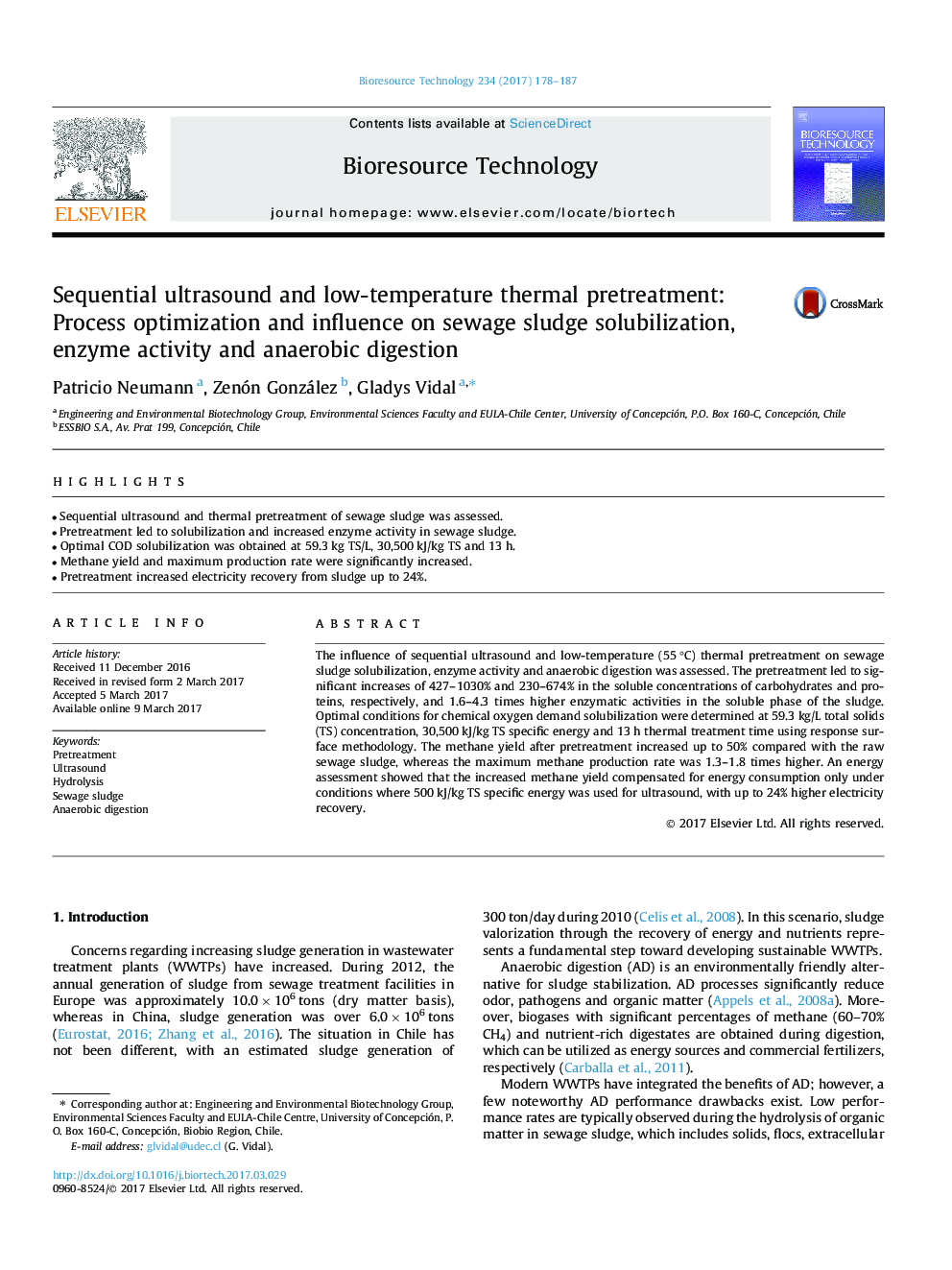| Article ID | Journal | Published Year | Pages | File Type |
|---|---|---|---|---|
| 4997341 | Bioresource Technology | 2017 | 10 Pages |
Abstract
The influence of sequential ultrasound and low-temperature (55 °C) thermal pretreatment on sewage sludge solubilization, enzyme activity and anaerobic digestion was assessed. The pretreatment led to significant increases of 427-1030% and 230-674% in the soluble concentrations of carbohydrates and proteins, respectively, and 1.6-4.3 times higher enzymatic activities in the soluble phase of the sludge. Optimal conditions for chemical oxygen demand solubilization were determined at 59.3 kg/L total solids (TS) concentration, 30,500 kJ/kg TS specific energy and 13 h thermal treatment time using response surface methodology. The methane yield after pretreatment increased up to 50% compared with the raw sewage sludge, whereas the maximum methane production rate was 1.3-1.8 times higher. An energy assessment showed that the increased methane yield compensated for energy consumption only under conditions where 500 kJ/kg TS specific energy was used for ultrasound, with up to 24% higher electricity recovery.
Related Topics
Physical Sciences and Engineering
Chemical Engineering
Process Chemistry and Technology
Authors
Patricio Neumann, Zenón González, Gladys Vidal,
